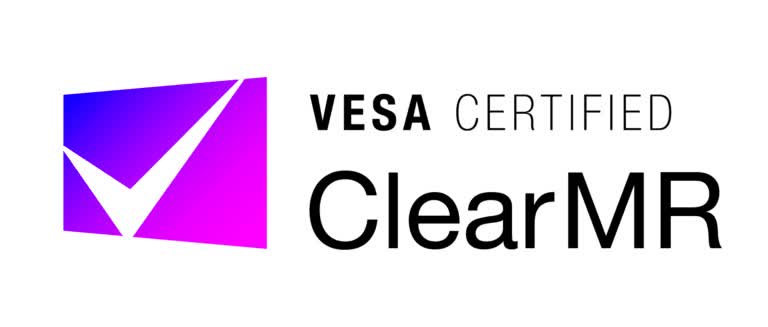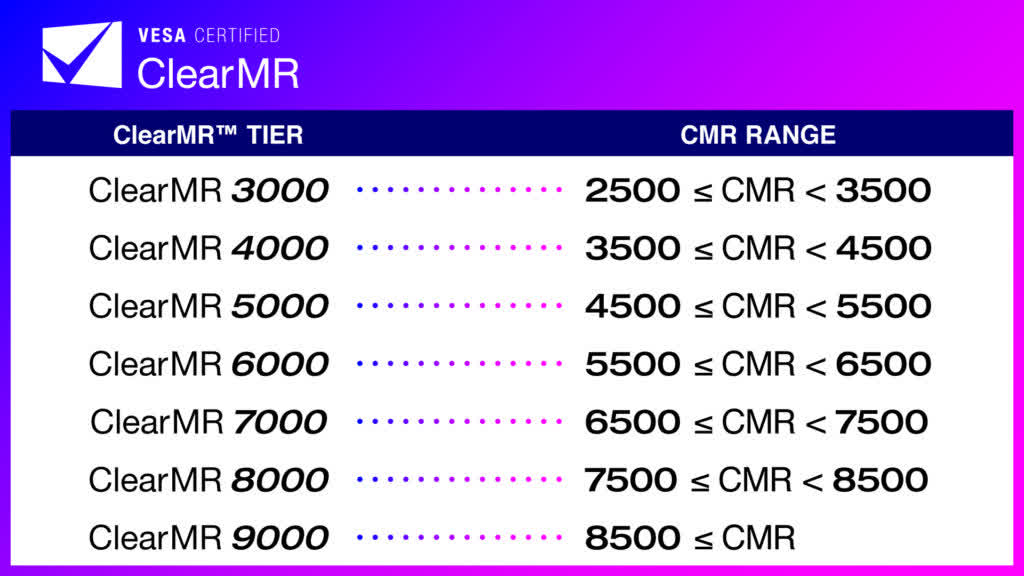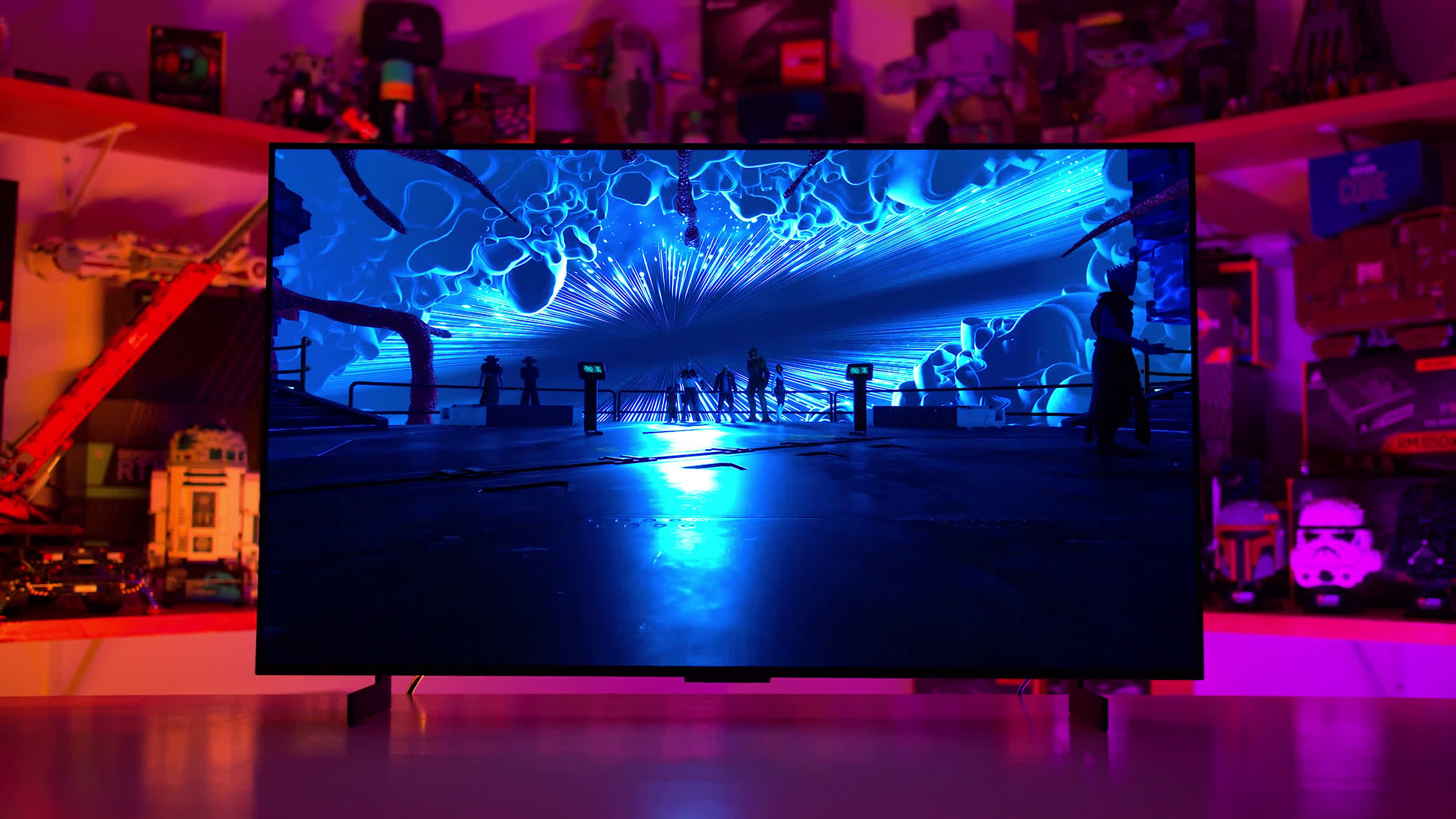In context: Most of the time, monitor manufacturers advertise pixel response time values that are downright useless and misleading. The Video Electronics Standards Association (VESA) hopes to help consumers make better on-the-fly buying decisions with its new ClearMR certification program. However, you should still do proper research and read independent reviews before buying any display.
The Video Electronics Standards Association (VESA) announced ClearMR, a new display certification program for measuring motion clarity performance. The ClearMR program and logos apply to LCD and self-emissive (OLED, microLED) displays, including monitors, TVs, laptops, and tablets.
Most monitor manufacturers currently only advertise best-case scenario gray-to-gray pixel response times, which can be deceptive for multiple reasons. Companies sometimes make measurements with unrealistically high ambient temperatures due to response times considerably improving the hotter a display gets. They also usually cherry-pick the best result rather than averaging several different G2G transitions.

Most importantly, gaming monitor makers usually carry out these tests with exaggerated overdrive settings resulting in massive pixel overshoot (inverse ghosting) and thus significantly degraded image quality. The new standard aims to provide a better metric for motion clarity by measuring how blurry a moving image appears on a given display rather than solely advertising a time-based measurement (pixel response times).
The ClearMR certification logo features multiple performance tiers, from ClearMR 3000 to ClearMR 9000. Each level represents a range of motion blur performance based on the ratio of clear pixels versus blurry pixels. For example, ClearMR 5000 has a CMR (Clear Motion Ratio) range of 45 to 55 times (4500 to 5500 percent) more clear pixels than blurry pixels.

In testing, VESA uses a high-speed camera, which takes pictures of a test pattern moving across the screen as it changes from one frame to the next. During certification, limits are placed on maximum luminance degradation, overshoot, and undershoot, while backlight strobing is disabled. If a display doesn't meet all these conditions, it can't qualify for a VESA Certified ClearMR logo.
Currently, there's only a handful of ClearMR-certified products --- the HP Omen 25i and a few LG monitors (some are region-specific variants that perform identically). Interestingly, LG's 48GQ900 OLED display only got a ClearMR 7000 certification. Modern OLED panels usually have fantastic pixel response times without the need for overdrive, so it'll be interesting to see what kind of display would qualify for the highest ClearMR tier (maybe Alienware's AW3423DW QD-OLED with a higher refresh rate?).
